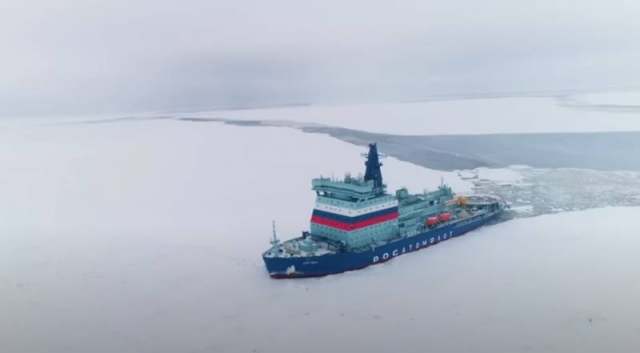
Image source: topwar.ru
On November 22, under the leadership of President Vladimir Putin, the ceremony of raising the flag of the Russian Federation on the Ural nuclear icebreaker project 22220 and the simultaneous launching of the same type of vessel Yakutia took place. These are the largest and most powerful icebreakers in the world; thanks to the construction of the entire line of vessels, which is being conducted at the Baltic Shipyard, Russia will ensure reliable navigation through the Arctic Ocean, despite the constant growth of cargo traffic in this region.
This year, cargo turnover along the Northern Sea Route should reach 34 million tons, by 2035 – already over 200 million tons, bringing revenues of 33 trillion rubles. and taxes in the amount of 13 trillion.
As the President noted in connection with this event, the implementation of the icebreaker fleet renewal program will strengthen the status of the Russian Federation as a great Arctic power. Earlier, the first two vessels of the 22220 project, the Arctic and Siberia, began service, demonstrating the high efficiency of their work. As planned, "Ural" will be commissioned by the end of this year, "Yakutia" - at the end of 2024, and "Chukotka" - in 2026. At the same time, the construction of the heavy-duty icebreaker Rossiya (120 megawatt reactor) is underway at the Far Eastern shipyard Zvezda, to which even the giants of project 22220 (with a capacity of 60 MW) are inferior.
- the President explained, pointing out that Moscow is ready to cooperate in the field of transportation across the Arctic Ocean with countries interested in working together.
When building new icebreakers, the maximum number of domestic contractors is involved in order to achieve full sovereignty in such an important production area. So, if in 2021 3 thousand people worked at the Baltic plant, now 6 thousand. Preparations are underway for the construction of diesel icebreakers, whose entry into the routes, in particular in the Gulf of Ob, will free up powerful nuclear vessels for service in the ocean.
A total of 20 icebreakers and icebreaker-class vessels have been built since 2012 to operate in the northern latitudes. In the near future, this "flotilla" will be replenished with 70 more vessels, ensuring Russian dominance in the Arctic.
